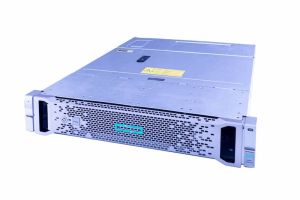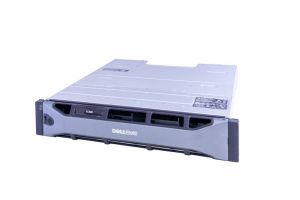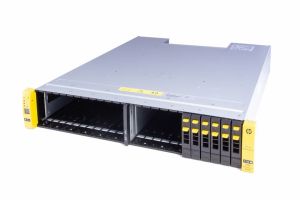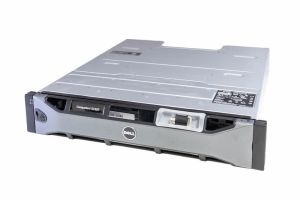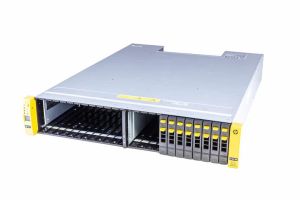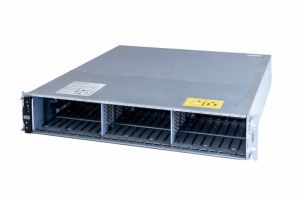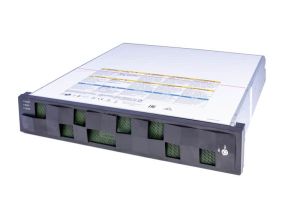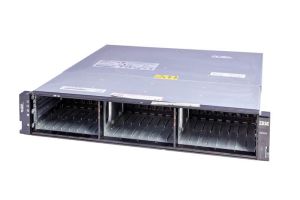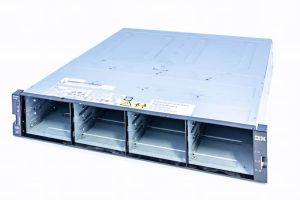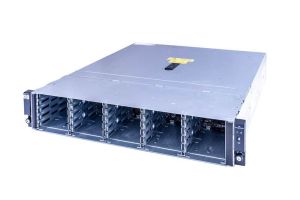Buy refurbished storage expansions
Get instant information about our latest offers. Sign up for our newsletter today. You can unsubscribe from the newsletter at any time free of charge.
Big Data - the trend towards storage expansion
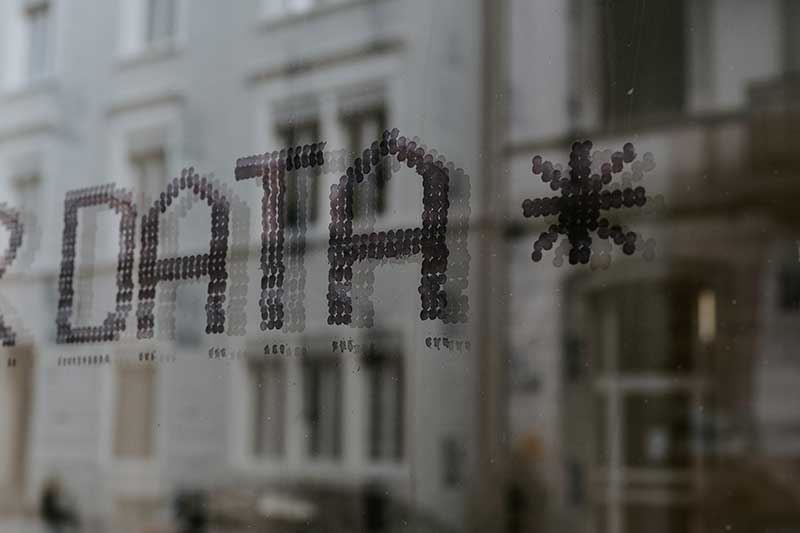 Ever more rapidly growing data volumes are pushing the cloud and data centers to their limits - but the hype surrounding the technology for data processing and analysis of the same name has died down somewhat in the meantime. Either you keep up with the times and let AIs (artificial intelligences) carry out customer approaches, surveys, process chains and real-time-based analyzes - or you lack personality and collect the information in an "old-fashioned" way.
Ever more rapidly growing data volumes are pushing the cloud and data centers to their limits - but the hype surrounding the technology for data processing and analysis of the same name has died down somewhat in the meantime. Either you keep up with the times and let AIs (artificial intelligences) carry out customer approaches, surveys, process chains and real-time-based analyzes - or you lack personality and collect the information in an "old-fashioned" way.
No matter how: An incredible amount of data is quickly generated with which attempts are made to create new values and to identify customer wishes more quickly. The "Data Lake" has metamorphosed into a mighty ocean and threatens to spill over.
But not only the trend towards data collection (“Would you like a cookie?”) is driving the expansion of storage capacities upwards – also the ongoing digitization. Paper-free offices and data that can be accessed anytime and anywhere are “the suffering of the Leitz folders”. “Big data” is not a modern term – masses of data were collected and political opponents monitored as early as the Second World War. With the advent of the internet and databases, there has been an explosion of new data collection tools.
It is therefore all the more understandable that on May 25th, 2018 a European General Data Protection Regulation (GDPR) was introduced, which regulates when and for what purpose data may be collected and how long it can/must be stored. The scandal that still reigns over the "big data" describes less the enormous storage space that is consumed as a result, but the use of the information that we collect every day in online shops, forums or social networks . (More on this in our blog post: The topic with the data...)
The former is also a huge "problem" that forces us to constantly innovate, trims our power and resource consumption immeasurably and brings us tons of electronic waste every year - because where new storage concepts are installed, old ones are usually thrown out.
Storage systems – an obsolete model?
 Large companies such as IBM or SAP are increasingly cutting jobs and want to concentrate on growth in the software sector. The former main hardware suppliers and IT consulting groups are now primarily focusing on the "Cloud" area - dies the hard drive along with your own Storage?
Large companies such as IBM or SAP are increasingly cutting jobs and want to concentrate on growth in the software sector. The former main hardware suppliers and IT consulting groups are now primarily focusing on the "Cloud" area - dies the hard drive along with your own Storage?
Every day we are surrounded by progressive optimization and future innovations: Our television program has long since expanded to include countless films, series and media, we no longer simply watch television, we "netflix", "stream" and "binge" - and are still bored of the small selection that is presented to us. We receive our evening snacks by subscription, of course vegan and low carb - but in an attractive bowl, after all, it's supposed to become a "food trend" on Instagram.
Oh yes, and followers in social media are the new environment of trust - after all, they get to know what else we do in our optimized work-life balance in addition to the home office. And if we are still overwhelmed by our current lifestyle, we simply disappear into the metaverse and create a virtual life alongside real life. Because we have managed to digitize ourselves - how should the type of storage, this countless data and preferences, be able to "stay"?
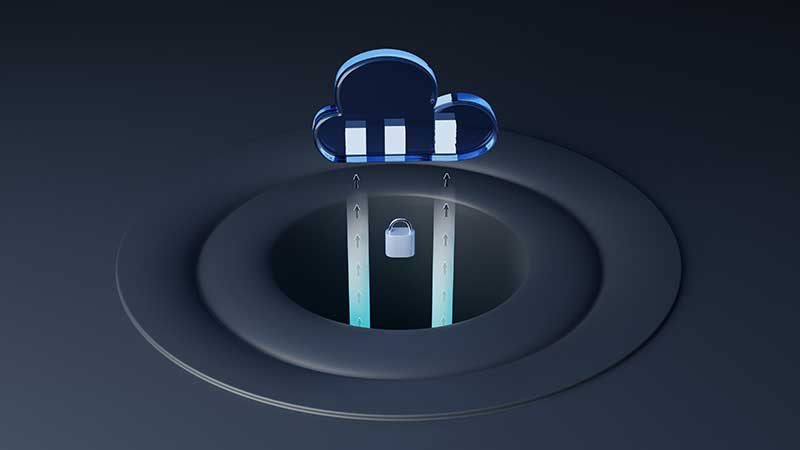 One thing is quite clear: at some point the time will come when we will say goodbye to hard drives and the "dinosaurs" among storage media, the tapes. But currently it looks like this: The cheapest price per capacity of stored data is still achieved by the HDD. And after a year full of crises, wars, increased electricity and energy costs, delivery bottlenecks and the ever-growing amount of data, the cloud is no longer a bargain. The price of a "technician hour" for standard IT services alone has risen from a little more than €65 to currently almost €97 per hour since 2010 (source: Synaxon Academy / IT Service Price Index 2022) - i.e. by approx. 48%.
One thing is quite clear: at some point the time will come when we will say goodbye to hard drives and the "dinosaurs" among storage media, the tapes. But currently it looks like this: The cheapest price per capacity of stored data is still achieved by the HDD. And after a year full of crises, wars, increased electricity and energy costs, delivery bottlenecks and the ever-growing amount of data, the cloud is no longer a bargain. The price of a "technician hour" for standard IT services alone has risen from a little more than €65 to currently almost €97 per hour since 2010 (source: Synaxon Academy / IT Service Price Index 2022) - i.e. by approx. 48%.
"More efficient storage" and "hybrid models" can be the solution to this. Of course, managed models in the cloud offer many advantages - especially for small and medium-sized companies that cannot afford to hire their own IT system administrator. However, this is an important asset in most companies: because the more employees there are in the offices, the more often there are small – and large – technical problems. From defective hardware to the installation of new systems and software to cyber attacks and data storage and backup.
Retreat from the clouds – Own data centers are in demand again
Many companies therefore prefer to have internal specialist staff instead of relying completely on competing IT consulting companies and IT system houses, both of which only want to sell their products and solutions. Even if the cloud is still a popular option, "cloud repatriation" is currently also starting - i.e. returning the stored data from the cloud to your own data center.
There are many reasons for this, as growth, profitability and security must not stand in each other's way. However, cost control and performance are probably the main factors that are decisive when it comes to the cloud or data center. The lack of skilled workers, the increased cyber threat situation, inflation, competitive pressure and above all the enormous growth in the data to be processed or secured are urging some companies to act. Workloads that were previously safely hosted in the cloud are now being brought back to home storage. Because just as the "technician in the house" is a welcome employee, it is also your own hardware that does not have to be "shared" with anyone and can be expanded and renewed according to your own taste.
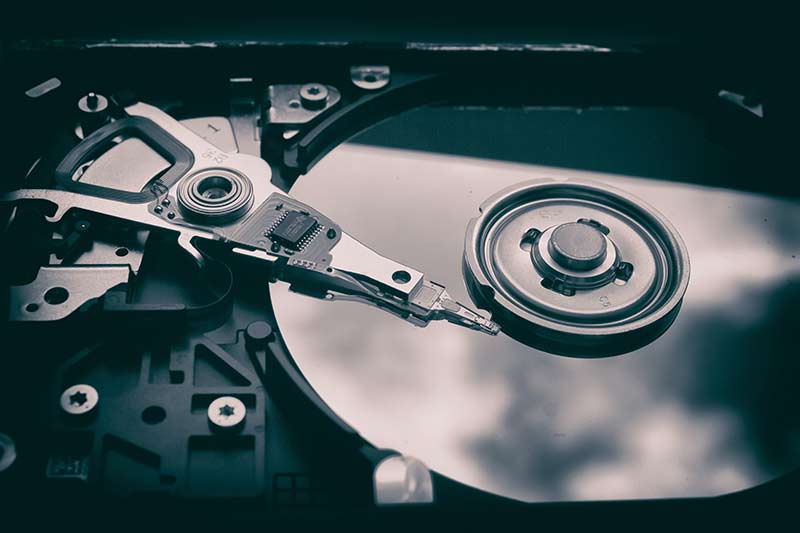 And this is exactly where the products from the refurbished area come into play: Factors such as "the hardware is too expensive or not available" tend not to play a role on the used market. After all, the goods do not have to be produced first, but are already "waiting" for the next user. And if the price advantage used to be the absolute argument for lifting your data "into the clouds", you have now noticed that many hidden costs can creep in with cloud provision. In return, you have better cost control with your own data center and save up to 70% with refurbished hardware compared to new hardware. (More on this in our blog post: "Green, green, green is my IT equipment ")
And this is exactly where the products from the refurbished area come into play: Factors such as "the hardware is too expensive or not available" tend not to play a role on the used market. After all, the goods do not have to be produced first, but are already "waiting" for the next user. And if the price advantage used to be the absolute argument for lifting your data "into the clouds", you have now noticed that many hidden costs can creep in with cloud provision. In return, you have better cost control with your own data center and save up to 70% with refurbished hardware compared to new hardware. (More on this in our blog post: "Green, green, green is my IT equipment ")
Expand storage systems cost-effectively – think about the future when purchasing
At the latest since the beginning of the corona pandemic, a real digitization boom has gripped Germany. Suddenly, SMEs also had to offer their employees home office space and ensure access to data and systems from outside. The more data is to be available anytime and anywhere, the more well thought-out the internal IT landscape of a company has to be. In addition to reliability and performance, the issue of security also plays a major role.
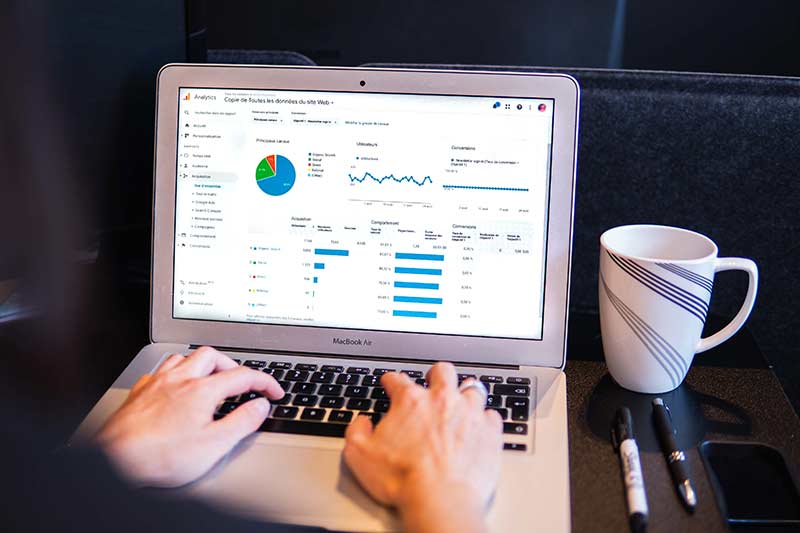 You are well advised to turn to professionals who will help you plan your own data center. For the most efficient and cost-effective data backup in the company, it is also worth knowing which data you want to store and process. Because here a distinction is made between "hot" and "cold" data - "hot" is what must be constantly available for smooth processes in the company, such as customer data or product data. “Cold data” refers to archive data and all that is hardly or extremely rarely tapped. The costs for the copies should be kept low, especially for the latter - both must be well secured in case the "case of the case", such as e.g. B. a cyber attack, fire or flood occurs.
You are well advised to turn to professionals who will help you plan your own data center. For the most efficient and cost-effective data backup in the company, it is also worth knowing which data you want to store and process. Because here a distinction is made between "hot" and "cold" data - "hot" is what must be constantly available for smooth processes in the company, such as customer data or product data. “Cold data” refers to archive data and all that is hardly or extremely rarely tapped. The costs for the copies should be kept low, especially for the latter - both must be well secured in case the "case of the case", such as e.g. B. a cyber attack, fire or flood occurs.
In terms of capacity, HDDs and tapes are still significantly cheaper than flash technologies. Especially in the area of offline backups, these are usually the "better" option than storing the data on SSD and NVMe data carriers. However, if you want to achieve better access times, you prefer to use the flash versions - also because there are no moving parts and the noise level, at least with individual employee PCs or notebooks, is quieter.
And your own growth is also included in the calculation - your own server landscape, including controller and disk shelves, should be fast and easily expandable. Here, too, the "middle way" model of on-premises solutions (i.e. "in-house storage") and private or public clouds can be the right strategy. The flexible workloads of the cloud are used in parallel with the solid computing power of the internal servers and storage shelves.
Operating costs vs. cybersecurity - data management as the be-all and end-all
Your own server room is still the backbone of a company – just like secure backup solutions and a DR (disaster recovery plan). Because if an unexpected incident such as a natural disaster, a power failure or a cyber attack occurs, operations can be resumed quickly - without major failures and loss of sales.
And here, too, there is a certain trend back from the cloud to your own data center, because current political tensions are causing companies to have concerns about the locations of their cloud service providers' servers. However, there is one thing to keep in mind: having your own system also means taking care of the uninterruptible power supply, air conditioning/ventilation, maintenance and backup copies yourself.
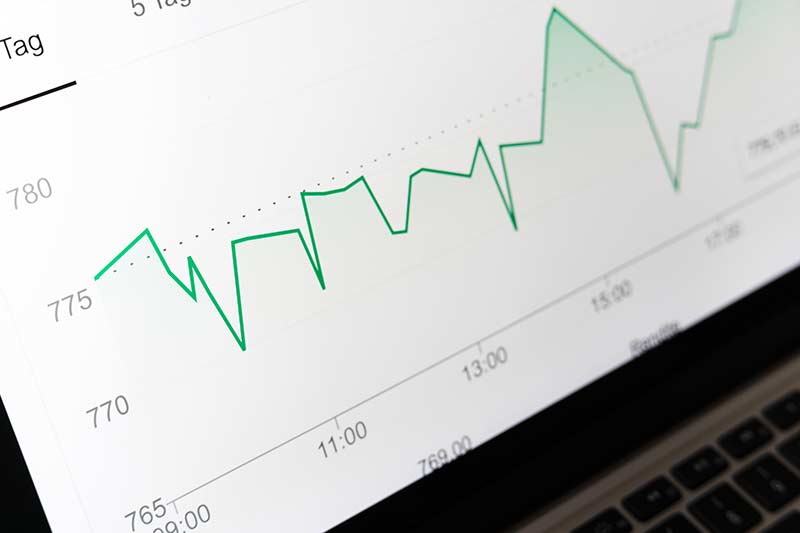 However, for many people, in-house storage is the better option when it comes to data security and backup. Data management is particularly important here - because hot data can become cold tomorrow and even the "cooled information" can become "hot" again. Similar to how all lines are regulated in a transport network and replacement and booster buses step in when the need arises, there should also be a certain data mobility. Workloads and information should be able to be easily retrieved from the cloud to the local data center or moved from there to online storage if required.
However, for many people, in-house storage is the better option when it comes to data security and backup. Data management is particularly important here - because hot data can become cold tomorrow and even the "cooled information" can become "hot" again. Similar to how all lines are regulated in a transport network and replacement and booster buses step in when the need arises, there should also be a certain data mobility. Workloads and information should be able to be easily retrieved from the cloud to the local data center or moved from there to online storage if required.
The management of AIs is also becoming increasingly popular when it comes to distinguishing "hot" and "cold data". In this way, a time- and rule-based comparison of the applications and information takes place, in which an artificial intelligence decides how the data groups are classified. This automation can save a tremendous amount of time and effort. Analysis tools, which not only carry out reporting but also make predictions for certain processes, are already part of the automation in the area of data management.
In order for all components to work together in hybrid systems, however, high availability, outstanding performance and optimal scalability of the storage are essential. And the same applies here: this modern professional hardware would not be feasible for SMEs in terms of price. However, even high-quality branded systems that have already been in use for 2, 3 or 7 years are by no means “outdated”, but more than sufficient for many small and medium-sized companies.
The advantage for the used hardware is not only in terms of costs: the faster and better availability also clearly outperforms the "opponent" new goods. After all, hard disks, shelves or controller modules do not have to be produced first, but can be delivered within a very short time. In addition, production errors can be ruled out - because the hardware was already in reliable operation. In this way, you can easily and easily expand your storage as required.
Sustainability in the data center
In addition to optimal data backup, another factor is also playing an increasingly important role: sustainability. High performance and data security must not stand in the way of the "green" and efficient data center. The balancing act that companies have to do to achieve their CO₂ targets seems impossible.
 But here, too, not only "refurbished" plays a major role, but also optimized data management and well thought-out security. Switching from mechanical hard drives to SSDs/flash memory can also bring enormous savings potential - especially when it comes to hot and warm data. Backup copies of archive data, on the other hand, can be stored inexpensively and in an energy-saving manner as “cold spares” (on tapes or SAS/SATA disks).
But here, too, not only "refurbished" plays a major role, but also optimized data management and well thought-out security. Switching from mechanical hard drives to SSDs/flash memory can also bring enormous savings potential - especially when it comes to hot and warm data. Backup copies of archive data, on the other hand, can be stored inexpensively and in an energy-saving manner as “cold spares” (on tapes or SAS/SATA disks).
And even as a large company, you can make an important contribution to protecting our environment by selling your old IT and hardware you no longer need. Because the amount of data that will be produced in the future is currently not foreseeable. And so tapes and HDDs still play a major role when it comes to data backup. Hardware that is no longer useful to you can be important to a smaller business.
If you feed them into the circular economy, you not only conserve valuable resources, you can also expand your own IT budget. This is how you generate valuable additional revenue for your company by reselling your IT. You can find more information about this here: https://serverando.de/Ankauf/ and in our Blog post on the IT purchase.

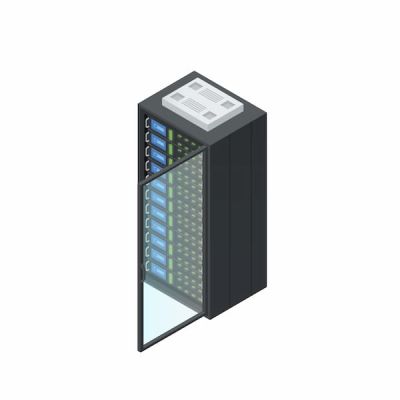
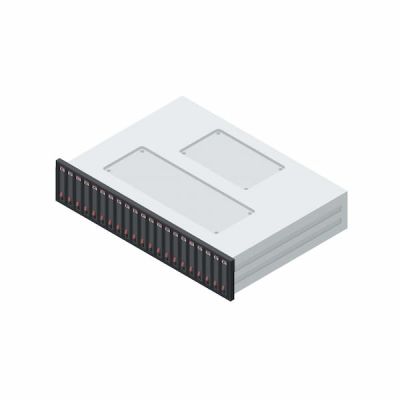
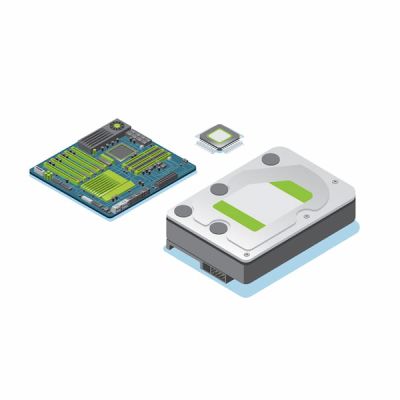
 Server
Server  Storage
Storage  Components
Components  Network
Network  Printer
Printer  Buyback
Buyback  % Sale %
% Sale % 